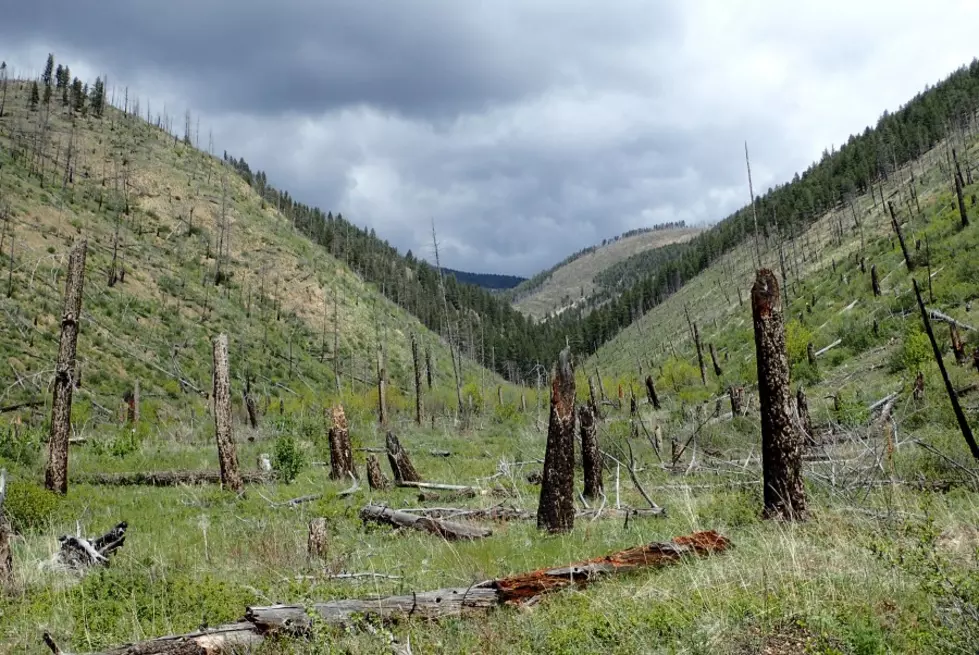
UM Researchers Receive NASA Grant to Create Tools for Reforestation
MISSOULA – As forest managers increasingly see less natural regeneration of low-elevation tree species and increased mortality in planted seedlings, reforestation needs are outpacing the ability of managers to respond.
Three University of Montana researchers recently received a $700,000 NASA grant to develop new tools to combat this problem. They will model the likelihood of tree recruitment declines in Western semi-arid forests – an important precursor to the loss of forest ecosystems.
“Across the West, land managers are charged with stewarding forests, ensuring they continue to grow and thrive,” said Solomon Dobrowski, a UM professor of forest landscape ecology in the W.A. Franke College of Forestry and Conservation. “But there are concerns about whether trees in semi-arid regions will regenerate as temperature, drought and wildfires increase.”
The project will combine NASA Earth observation data, forest inventory data and a coupled ecohydrologic and plant hydraulics model to simulate drought stress and lethal surface temperatures for conifer seedlings. These indicators are critical drivers of seedling mortality in semi-arid regions globally. The output will highlight areas where natural recruitment is likely to fail or succeed and will help inform U.S. Forest Service restoration plans.
“Forests are the dominant terrestrial ecosystem on the planet and harbor the majority of species on Earth,” said Dobrowski, the grant’s principal investigator. “There is real concern that in warmer and drier regions, forests will lose the capacity to naturally regenerate and disappear over time. We need to know where and under what conditions this is likely to happen.”
The project team is composed of three researchers at UM – Dobrowski; Marco Maneta, professor of hydrology and hydrologic modeling in the Department of Geosciences; and Zack Holden, affiliate faculty member in the Department of Geography. Partners also include scientists and managers from the Forest Service, including Vince Archer and Shelagh Fox from U.S. Forest Service Region 1 in Missoula.
The project builds on a previous study by these researchers related to water stress in conifer seedlings. The co-authors modeled hydraulic stress and mortality in ponderosa pine seedlings in the Bitterroot watershed of western Montana. They showed that cumulative hydraulic stress, its legacy and consequences for mortality are predictable and can be modeled at various scales.
“Incorporating cumulative effects of drought to better predict tree mortality is at the forefront of ecohydrologic modeling,” Maneta said. “Our previous work demonstrated efficient ways to simulate these time-dependent processes from plot to landscape scales.”
This new project broadens the geographic scope of the previous study to cover the western U.S. by using NASA satellite data to quantify soil moisture across broader regions. The goal is to develop a robust set of tools the USFS and other managers can put into practice to help reforestation efforts succeed across the West.
“Being able to predict the conditions that kill tree seedlings across landscapes requires expertise in biology, ecology, hydrology, climate science and computer science,” Dobrowski said. “Being able to apply this information to inform reforestation efforts requires experience in forest management. No single individual has all of these skills.”
He said a key strength of this project lies in bringing together people from various disciplines and from academia and government agencies to allow for basic science to be translated to tools for decision-making.
Work on the project will begin in January.
---------------
UM News Service


![‘CMA Country Christmas’ 2018: See the Most Magical Moments [PICTURES]](http://townsquare.media/site/623/files/2018/12/cma-christmas.jpg?w=980&q=75)


